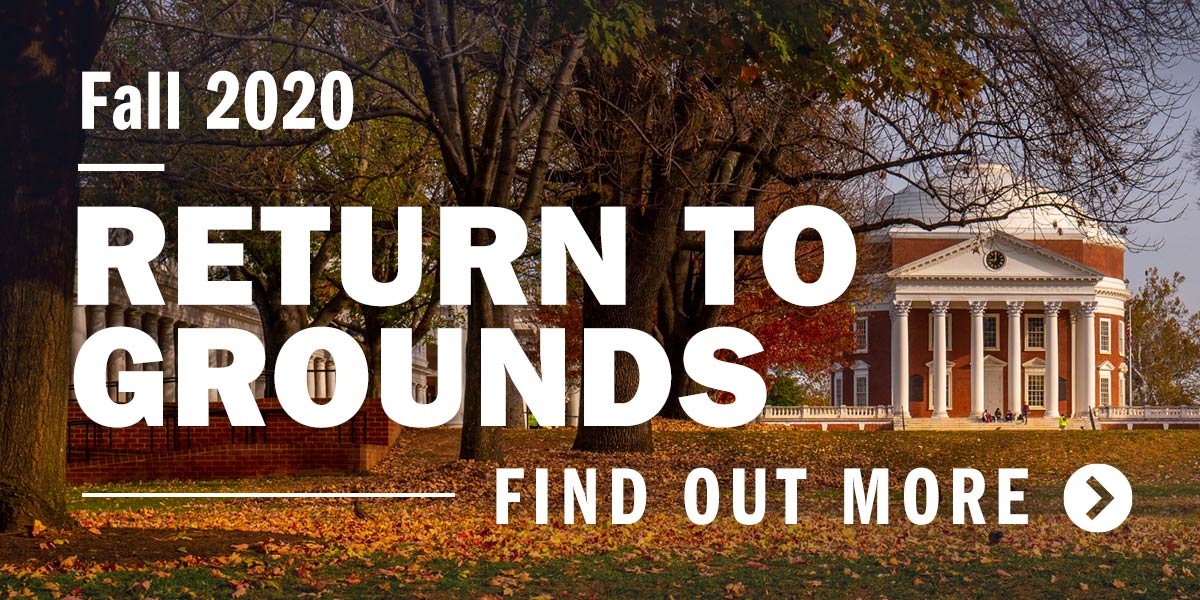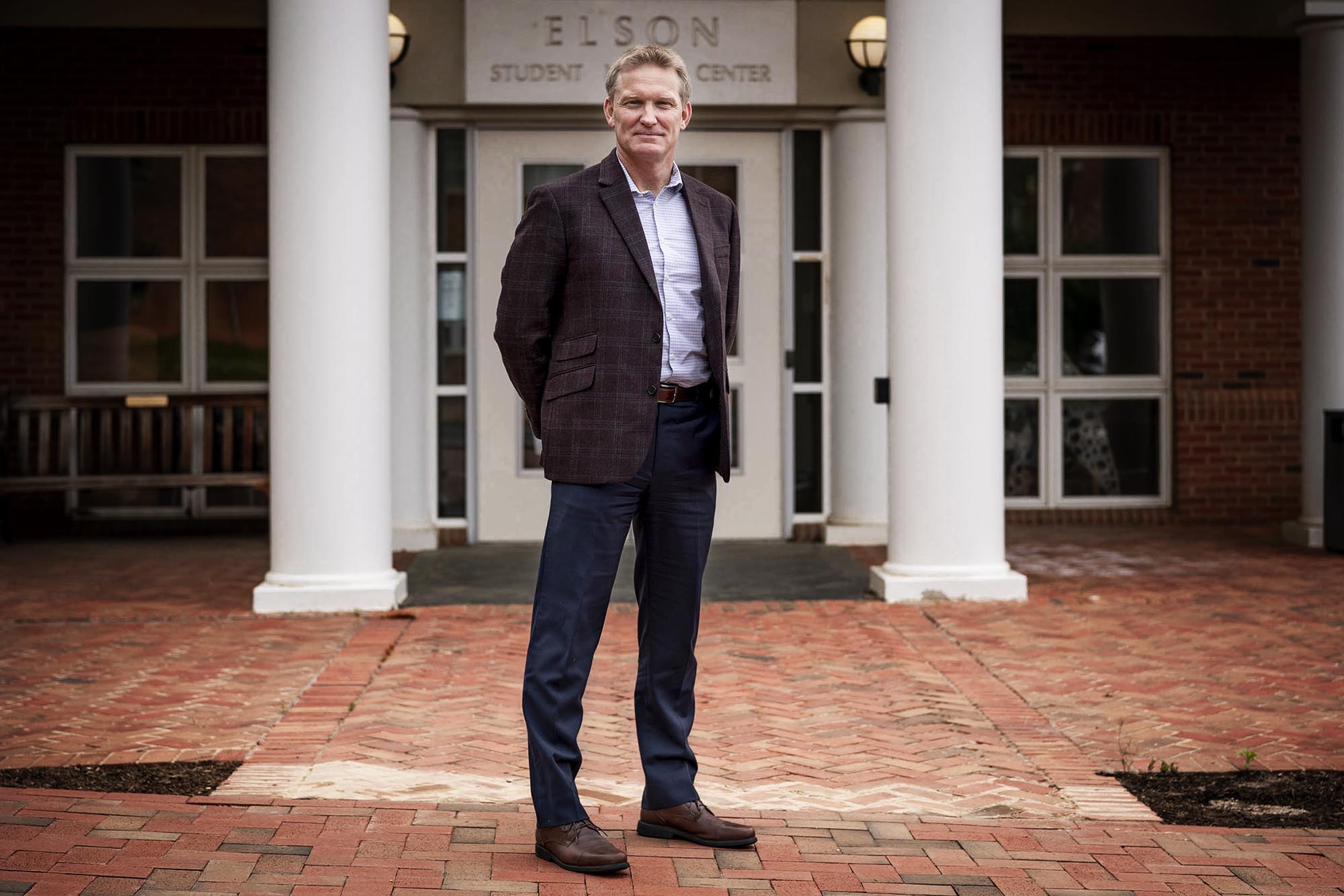With many undergraduates poised to return to Grounds for the fall semester amid the coronavirus pandemic, the University of Virginia’s Department of Student Health and Wellness has been working non-stop to support students’ health and well-being.
UVA is refining its plans for isolation and quarantine housing. Isolation housing will be offered to students who are living on Grounds in the event they test positive for COVID-19. “They would need to go into isolation for a period of 10 days after the onset of symptoms or the positive test result, whichever is later,” said Marshall Pattie, who created UVA’s protocol for both housing situations.
Students who are living on Grounds and have been exposed to someone with COVID-19 will enter quarantine housing for 14 days. Meals and telehealth care will be provided to students in both housing conditions.
For students living off Grounds, the University is encouraging households to develop a plan if they or a roommate is either exposed to COVID-19 or becomes ill with the virus. The University encourages students who are unable to move in with a friend or return to their permanent home to follow the Centers of Disease Control and Prevention’s guidance for living in close quarters.
UVA Today reached out to Dr. Chris Holstege, the executive director of the Department of Student Health and Wellness, to learn more about how his team has been preparing since March to care for student patients amidst the pandemic.

Q. How is Student Health and Wellness pivoting its services this fall to deal with COVID-19?
A. Since March, the big pivot – and it happened very quickly – has been telehealth. In a matter of weeks, our teams were able to offer teletherapy and telepsychiatry and telemedicine, so students had and continue to have ready access to care providers.
The Student Disability Access Center, also within Student Health and Wellness, has been really busy providing accommodations for students virtually. I’m really proud of all of our teams.
Q. What should students do if they have symptoms related to COVID-19, or learn they have been in contact with someone who has tested positive for the virus?
A. We want students to call Student Health and Wellness for symptom review and testing to take pressure off of UVA Health, as they are a main provider of care and testing for our community.
Connecting with our department allows students to go to a place that they know. We’re also a team that can help with common questions that arise. “What if I do have a positive? What am I supposed to do during quarantine? What do I do during isolation? How does it impact my studies? What support can I get from the dean?”
We know this University and its resources well, and that allows students to get personalized assistance. We do ask that students call first to schedule an appointment if they have symptoms.
Q. COVID-19 has introduced a lot of stress. If students are feeling overwhelmed, what do you recommend?
A. UVA Counseling and Psychological Services, a part of Student Health and Wellness, is fully operational. The majority of their services are being offered virtually. Some of their visits are happening in-person when more appropriate for the concern that is raised. This comes with its own unique challenges, as personal interaction and seeing faces is key to our teams’ work---and we’re all wearing masks.
The other thing that we recognize is some students may not have a private setting in which to talk with the counselor or a psychiatrist. So, we’re actually adapting some of the offices in Student Health and Wellness, where students can come to our building and actually sit in a private office and talk either directly, or could potentially sit in one of our offices and talk with them virtually.
Additional student resources include WahooWell, a service provided within our Office of Health Promotion. WahooWell offers confidential, one-on-one remote meetings with a well-being facilitator. Students can discuss planning during times of transition, as well as strengths, goals, and motivations related to well-being.
Q. How has the physical space at Student Health and Wellness been adapted?
A. The waiting rooms are not being utilized. So, in the past, you could be a walk-in or you could call and make an appointment. Currently, we’re asking all students to make an appointment, and that’s to allow for appropriate physical distancing. One of our team members is stationed at the entrance at Brandon Avenue to help to direct students. This goes for all the services. Further, Counseling and Psychological Services, the Student Disability Access Center, and the Office of Health Promotion are primarily offering services virtually to give our medical services team the space to work safely.
Q. Will there be drive-through testing?
A. When students need to be tested for COVID, a rapid visit at Student Health & Wellness is arranged to obtain the sample. This may be done outside via drive through (weather permitting) or inside. The testing appointment is brief, less than 10 minutes. If a student has significant symptoms, they will receive an appointment with a health care provider for both testing and a hands-on physical exam.
What we’re trying to do – and what’s necessary for us to be successful in our community with the students coming back – is rapid testing and rapid contact tracing. We’re trying to get testing services set up as smoothly and quickly as possible, with multiple teams conducting testing of students. And the testing can be pretty quick.
So, the hope is most people who have symptoms will have mild symptoms, and really don’t need a full telehealth appointment. They just need to come in, get a test, and go.
Q. What is the average turnaround time between getting tested and getting test results?
A. We are very fortunate to be affiliated with UVA Health, and we certainly think within 24 to 48 hours, test results will be back from UVA Health.
Q. How will contact tracing work?
A. Contact tracing is performed by the Virginia Department of Health. We have a close partnership with VDH, and assist because we have a unique community. So, as the Virginia Department of Health is trying to figure out who the contacts are, they may have to get some help from the university to determine who the person may have had close contact with during the infectious period.
For example, if we have a student who turns positive, some of the contact tracing-related questions that will be asked are, “Who do you live with? Who have you been with?” They go back two days from the time of symptoms, so if my symptoms started Wednesday, they’d go back to Monday to see who I had contact with.
Contact is defined as being within 6 feet of someone for more than 15 minutes. And that’s why the physical distancing is so important between students. If you are farther than 6 feet from someone for less than 15 minutes, you will not be considered a contact.
Another way that our whole community can help the Virginia Department of Health is by engaging with the Hoos Health Check and COVIDWISE applications. Hoos Health Check is designed to help a student recognize symptoms of COVID and to prompt a call to Student Health and Wellness. COVIDWISE facilitates identification of close contacts by the Virginia Department of Health using Bluetooth technology in a confidential manner.
Q. Are you concerned about the coming flu season?
A. We are concerned about the emergence of the influenza season. However, some evidence suggests that we will not see a bad flu season because people are washing their hands, wearing a mask and socially distancing. So, we may see a year where influenza is not really as prevalent, because it can’t spread well.
Q. What is your advice to students returning to Grounds?
A. Students must abide by the guidelines public officials have put in place – those include, “I have facial coverings. I’m socially and physically distancing; I’m washing my hands on a regular basis. Trying not to touch my face, definitely not sharing cups.” Just be very careful. And we know that works.
I think people had concerns when this first started about how well those preventative measures worked. But they do work.
Media Contact
Article Information
August 19, 2020
/content/here-how-student-health-and-wellness-preparing-students-return-grounds

